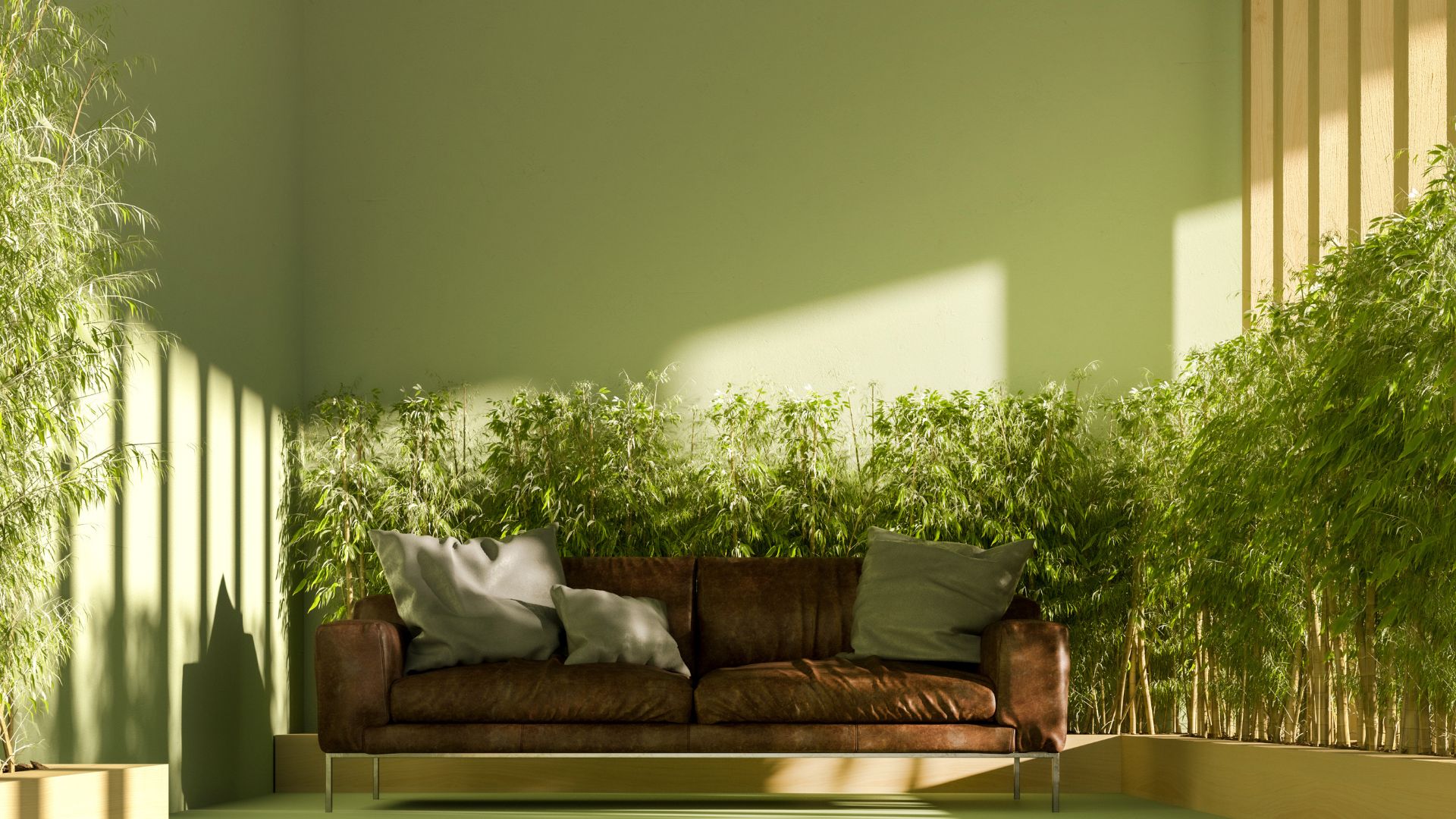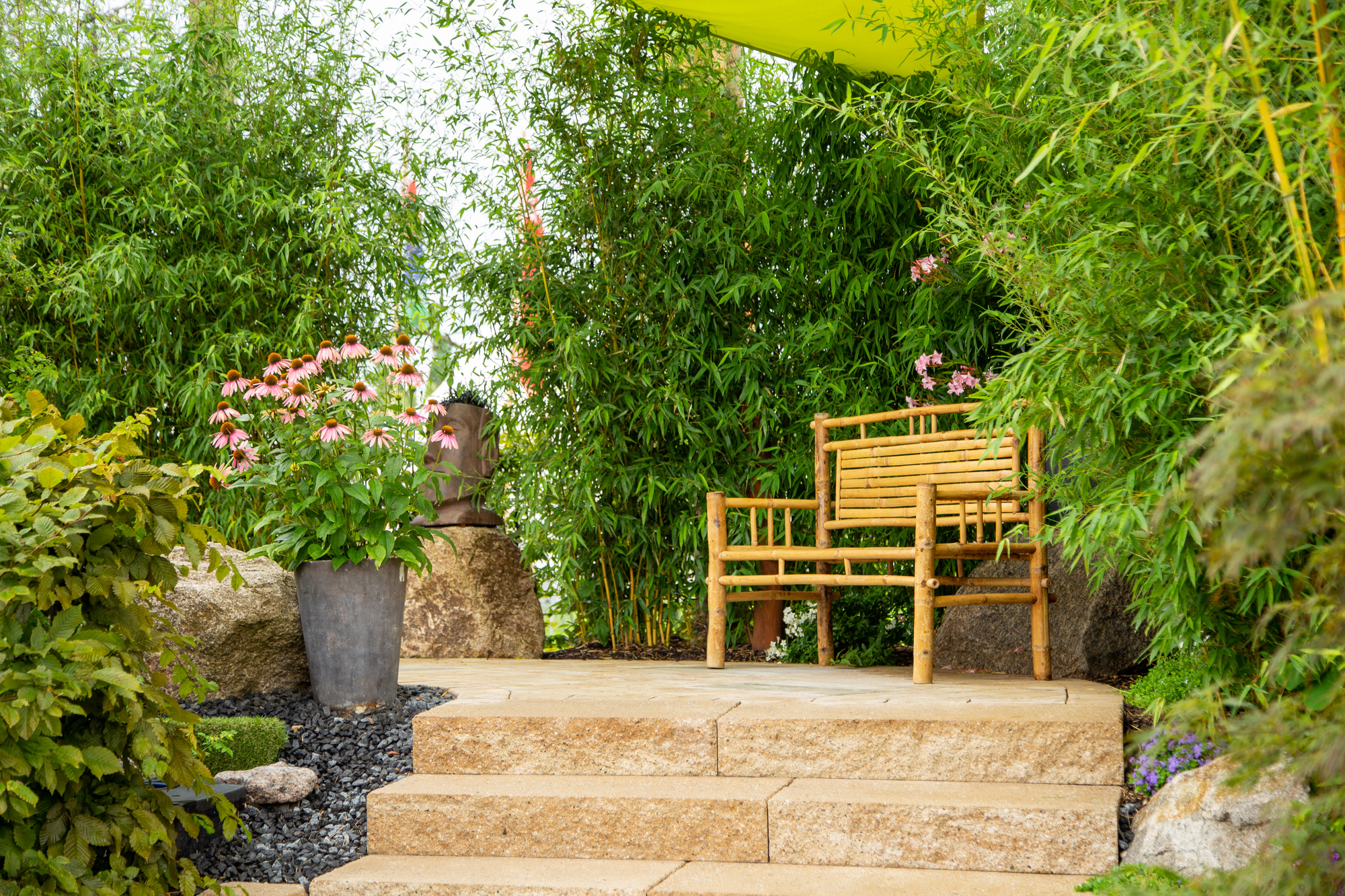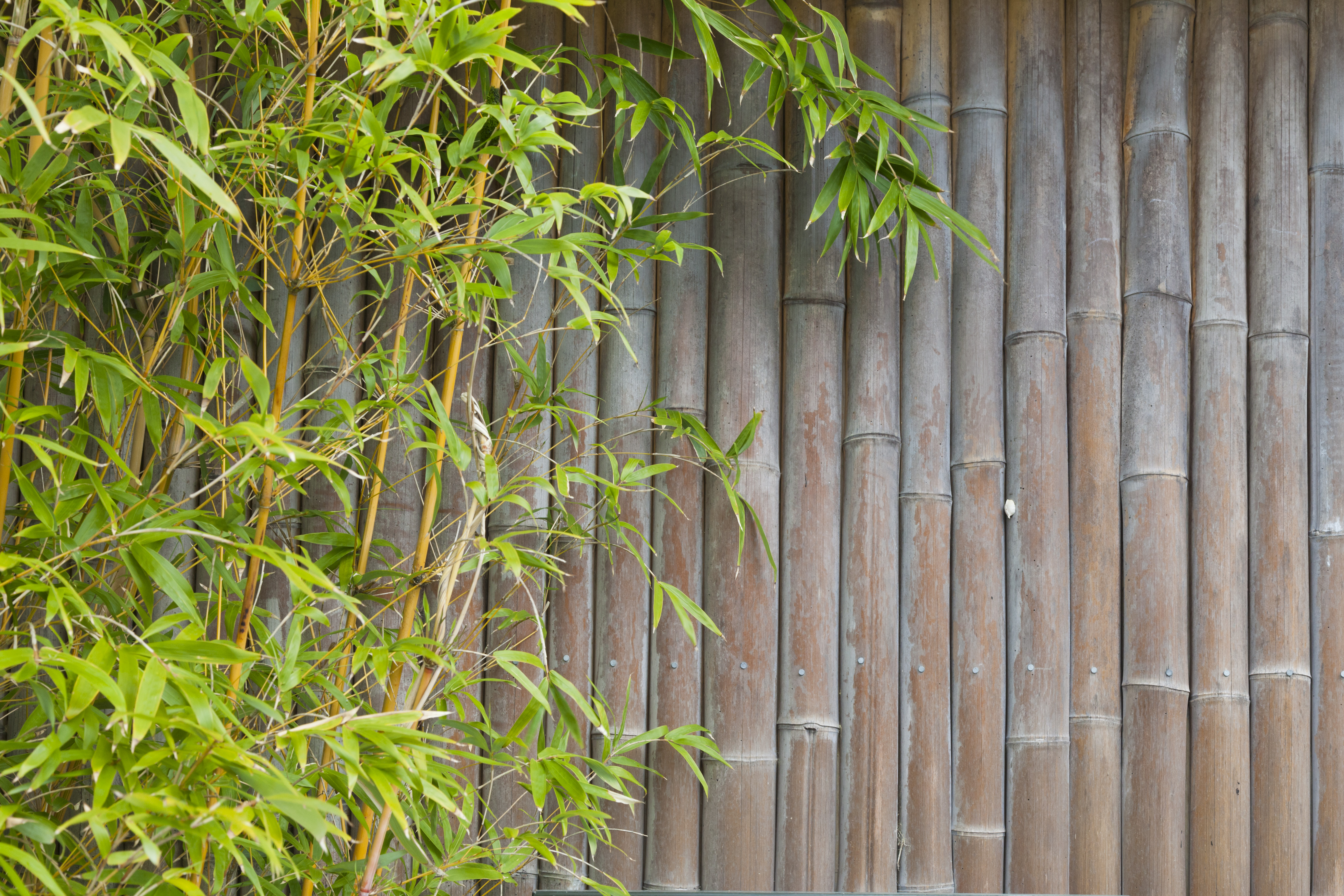
Learning how to revive a bamboo plant that is struggling to survive is a must. After all, a healthy plant is a happy plant, so, if you do notice your bamboo withering away, it's time to bring it back to life. Whether yours is an indoor potted plant or growing outdoors in containers or borders, you'll want to give it some much-needed tender loving care.
Known as one of the best plants for privacy, this evergreen plant is fairly easy to care for. However, it still needs the correct care. "Reviving a bamboo plant can often be achieved with the right combination of care, environmental adjustments, and patience," says Gardening expert Tony O'Neill from Simplify Gardening. "Bamboo is incredibly resilient, so it’s not uncommon for a plant to bounce back, even if it appears to be struggling. However, it's essential to identify the root cause of the issue, whether it's watering, light, or pests, to provide the appropriate remedy."
We spoke to the experts to learn all about how to keep bamboo alive. Here's what they had to say about it.
How to Revive a Bamboo Plant
Even the best trees for privacy can go through difficult phases. Like most plants, your bamboo will give you early signs that it's going through a difficult time. The main clue that your bamboo may be dying and, therefore, needs saving, is when you start to notice its green leaves turning yellow and drooping.
Yellow leaves on bamboo won't turn green again, and you may even lose some stalks of your plant. However, that doesn't mean your bamboo is beyond saving entirely. In fact, with the right conditions, it will recover, and new shoots and stalks will grow back.
Here are six steps you can take can revive your bamboo plant.
1. Ensure You're Giving It Good Quality Water

While bamboo plants are naturally hardy and great for low-maintenance gardens, if yours is struggling, especially if the leaves are starting to turn from lush green to yellow, you are better off switching from faucet water to filtered water. Faucet water often contains chemicals that could be damaging to the bamboo, so make the change, and you'll more than likely notice improvements.
"For golden bamboo, continue a watering schedule of approx once a week, depending on the size," says Kat Aul Cervoni, landscape designer and founder of Staghorn NYC, and The Cultivation by Kat. "Overwatering is just as damaging as underwatering, so you want to make sure it's not oversaturated. For a lucky bamboo plant, which isn't actually bamboo, but is a member of the Dracaena family, these water-dwelling plants should have their water changed two to three times a week to ensure freshness"
Kat tells us that these plants are sensitive to water quality, "so if you find that your plant's foliage is yellowing, even with lots of careful water changes, you may need to switch to watering your plant with bottled or distilled water, or be sure to use an at-home water filter to filter water before watering it," she adds. A weekly water routine should suffice but do regularly check the moisture of the soil — whether your plant is indoors or out. You could also add mulch to the pot, or around the roots of the bamboo, to ensure it retains moisture between watering.
If your bamboo plant has dried out, landscape gardener Andy Sturgeon suggests some tips. "Dried-out plants should have dead stems cut back, and the whole pot should be submerged in a large bucket of water, or even a pond, until all the air bubbles come out."
Price: $17.99
Size: 5.87"D x 10"W x 4.41"H
This stainless steel watering can from Amazon comes with a long, curved spout making it easier to water those beloved plants. Ideal for indoor and outdoor plants, this durable watering can is leakproof, rust-resistant and scratch resistant.
Price: $48
Size: 9.25"H, 7" mid diameter
Unique and full of allure, this stylish orange colorful Glass Watering Can from Anthropologie is a must-have. For indoor and outdoor use, this sleek and modern watering can is essential for keeping your plants happy and healthy.
Price: $16.99
Size: 8.6 Inches (H) x 4.2 Inches (W) x 9.6 Inches (D)
This Accented Metal Watering Can Brass Finish from Target is easy to use and is ideal for both indoor and outdoor watering needs. It is constructed with a brass finish and designed with a long and curved spout, as well as a round handle on top.
2. Expose the Plants to Adequate Sunlight

Most species of bamboo enjoy plenty of sunlight. However, constant direct sunlight could cause the leaves to turn brown and the plant to become dehydrated quickly. If you've decided to place your plant in a container garden, try moving it to an area with filtered or indirect sunlight. Bamboo plants grow well in those shady gardens, too — but the process might just take a little longer. This can be seen as a good thing, since bamboo can get out of hand. Bear in mind, if you want to use bamboo as a privacy fence, a sunny spot will help it grow tall and fast.
Kat explains: "Both golden bamboo and lucky bamboo plants thrive in bright, indirect sunlight with a minimum of six hours of sunlight each day. Low-light rooms or darker corners won't be the right spots for them."
Given that bamboo is a tropical plant, Kat says you should not place it near vets or heaters, as this could cause the plant to dry out and disrupt the humidity needed for it to thrive.
3. Add Fertilizer to the Soil

Fertilizer isn't essential for the bamboo to thrive, but if your tropical garden and its plants are looking a bit tired and worn out — giving them a boost of nutrients will help. Use a nitrogen-rich fertilizer to begin with, (This MARPHYL Organic Liquid Fertilizer, From Amazon should do the trick) and then switch to a fertilizer with a more balanced pH.
If you keep your bamboo in pots and containers, then you should be feeding them regularly with a liquid feed. "If your bamboo plant is looking a little dull, wilted, or brown, the extra nutrients from fertilizer can help perk it up," says Whitney Bromberg Hawkings, founder of FLOWERBX. "We recommend one rich in nitrogen to help give it an extra mineral boost."
4. Prune Your Plant

Learning how to trim a bamboo plant is key to keeping it happy and thriving. If it's just a small section of your plant that's wilting or turning yellow, cutting this away will help the rest of the plant continue to thrive. You should always pull off problem leaves (ones that look dry or yellow) and cut away any bad stalks that are shriveled and dehydrated. Remember, you'll need to ensure you have the right pruning tools for this. This Wobythan 11 Inch Folding Hand Saw from Walmart should do the trick.
"When long shoots become brown and dry, hack them off,' says Mel Brasier, a New York-based designer and landscaper from The Manscapers. They need to be constantly trimmed and pruned back to make sure that the green shines through. As bamboo searches for light, it grows taller and taller — it loves a healthy amount of sun." Mel tells us that every 6-8 months, or once a season, you should get a saw or trimmer and remove the top layers of the plant so that it does not droop too far into your backyard.
You should also prune your bamboo if it starts to flower. It's not a guarantee, but a flowering bamboo can die or at least weaken the plant, turning it brown. So when you catch a flowering shoot, remove it immediately to discourage more flowers. If you have left it to the point where the whole plant is flowering, you can try to keep the bamboo alive by feeding it and watering it regularly. Then, once it's finished flowering, cut the whole plant right back to the ground. This may seem brutal, but it will hopefully encourage new growth and ensure you have a healthy courtyard garden.
5. Check for Signs of Pests

"Insects are a big cause of bamboo dying – so make sure that there are no pests taking over your bamboo," says Mel. "There are many organic and non-toxic pesticides in the market now – one natural bug deterrent is neem oil." If you're wondering how to use neem oil for plants, you could add it to a spray bottle, or mix it with water or soap. This Organic Neem Oil, from Walmart is a great choice.
If aphids are the problem, you can try soap spray. Just mix soap and water with a ratio of 1/4 together in a clean spray bottle and then cover the plant, focusing on the underside of the leaves and you'll find this is where most insects will be.
6. Protect Your Plant During Winter

Bamboo is hardy, we've established that, however, they will start to suffer when temperatures drop below freezing.
If it's not an option to bring your bamboo inside or pop it in a summerhouse, Mel recommends the following: "Wrapping up your bamboo in burlap in the wintertime will help protect it from snow damaging the long limbs. If a lot of snowfall occurs it can easily break and damage the bamboo, so having it covered and wrapped will help protect it, and keep those long shoots strong, tall, and healthy-looking."
A Step-By-Step Guide

Looking for a quick and easy step-by-step guide on saving your dying plant? Gardening expert, Tony O'Neill, from Simplify Gardening has given us a quick summary of what needs to be done:
Check Watering Routine: "Bamboo plants need consistent moisture but should never be left in standing water," he notes. "Ensure that the soil is well-draining and adjust your watering schedule. Overwatered bamboo often shows signs of root rot, while under-watered bamboo can wilt or turn brown."
Trim Dead Parts: As stated above, "If parts of the plant are brown or dying, trim them back to healthy growth. This helps the plant focus its energy on recovering the healthy parts."
Increase Humidity: Bamboo thrives in humid environments. According to Tony, try misting the leaves daily or placing the pot on a pebble tray filled with water to increase humidity around the plant.
Move to Indirect Light: If the plant has been in harsh direct sunlight or too much shade, find a spot with bright, indirect light and this will encourage new growth.
Check for Pests: Lastly, Tony says: "bamboo can sometimes be affected by pests like spider mites or aphids. If you see any signs of these, treat the plant with neem oil or insecticidal soap."
FAQs
Why has my bamboo plant died?

"If your bamboo plant has died, the most likely causes are root rot from overwatering, insufficient light, or extreme temperatures," says Tony. "Bamboo plants prefer consistent conditions, and sudden changes in temperature or humidity can lead to shock."
Additionally, Tony says compacted soil or poor drainage can suffocate the roots, leading to the plant's decline.
Can yellow bamboo leaves turn green again?
Yellow bamboo leaves will not turn green again. Instead, let them drop or gently prune them off the plant. You may find that the yellow leaves are attached to a single stem of your plant and it is this part of the plant that has died back.
In this case, it's best to trim off that stalk at soil level. New ones will grow back in its place if you can correct the conditions that are causing your bamboo to show signs of distress.
Why is my indoor bamboo dying?
There are various reasons a bamboo plant, indoors or out, might start to die. One reason might be pot size. Ideally, you want to choose a container that has enough space for the plant to grow and thrive. The pot size is determined by the plant's diameter. A standard size range is from two to thirty inches, although the larger ones are mostly used outdoors. For a bamboo plant, you could consider two, three, five, and seven inches.
Another might be its position: to help bamboo thrive and keep it looking its best, keep it in a sunny spot that's not in direct sunlight for more than five hours a day and water it weekly with clean, filtered water. Too much direct sunlight however will dehydrate the plant and could cause the leaves to shrivel, so be sure to choose a spot that's either in filtered sunlight or indirect sunlight. "Your indoor plant should be in a room with lots of light, but you may want to position it so it's not directly in the sun's path — filtered light, or light that bounces off of walls or floors will help keep the plant from drying out," says Whitney. "The amount of light your plant needs will also depend on the exact species, so it's worth knowing what kind of bamboo plant you have and understanding what it requires."
As a quick rule of thumb, you can often judge how much light an indoor bamboo plant needs based on the size of its leaves. A species with smaller leaves needs more light, whereas a plant with larger leaves would be fine in a shadier position. Beyond those basics, you will also want to consider what your bamboo is growing in.
"Bamboo plants soon become pot-bound, meaning there is little soil to retain moisture and nutrients for the roots to access." landscape gardener Andy Sturgeon. "So it's important that the pot or container should be big enough to sustain it and you will have to repot it fairly regularly for it to stay healthy. You always want your pot or container to be twice the size of the root ball."
Finally, save a dying bamboo plant by getting the watering routine just right. Bamboo plants need watering weekly. If outside, that can, of course, come naturally from rainfall — just be sure to monitor the moisture of the soil in warmer, drier months. If your bamboo plant is kept indoors, you'll need to manually water it once a week, and it will need more frequent watering in the summer.
"Bamboo plants generally need water once a week, but keep an eye on its soil texture — in hotter or drier months, you may need to water it a little more often," adds Whitney.
Price: $139.98
This green hedge bamboo from Walmart is ideal for all your privacy needs. This product comes with three live plants and can grow fairly quickly if you are looking for a quick privacy screening solution. It offers a dense, clumping growth which makes it well suited along hedges, borders, driveways and near your backyard fence. This plant can grow up to 25 feet tall.
Price: $64.99
This Asian lemon clumping bamboo from Amazon has quite a unique look, with its canary yellow canes and green stripes. It can grow up to 25 feet tall and is ideal for zones 8 to 11.
Price: $31.99
Ideal for indoors, this lucky bamboo from Home Depot will brighten up your space and can grow beautifully up to heights of five feet. To bring peace into your home, you can place this blooming plant in your living room, as it makes for a great feng shui living room plant.







